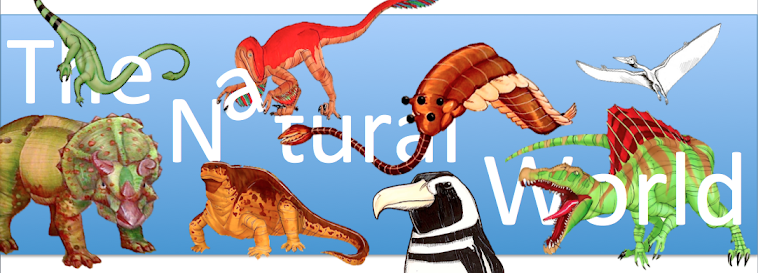Gasparinisaura is considered to be a part of the basal, or primitive, ornithopods. Ornithopods are different from other ornithischian dinosaurs in that they have a premaxilla bone that reaches further than their maxilla bone, and that their jaw joint is further down than in other dinosaurs. Most of the basal ornithopods were around during the Jurassic Period, such as the Late Jurassic Othnielia rex, who inhabited what would become the rocks of the Morrison Formation of Colorado, Utah, and Wyoming. Most of the rest of the basal ornithopods didn't survive past the Early Cretaceous Period, but Gasparinisaura has been found in rocks dating from around 80-90 MYA, right smack-dab in the Middle Cretaceous Period of Argentina. According to the Jurassic Park Institute, "Remains of dinosaurs from this time span are so extremely rare, all the specimens in the world would fit in one small exhibit hall!"
Let's take a brief look at what we know about the evolution and the dispersal of the basal ornithopods, shall we? According to my massive, 861 page book called The Dinosauria, every member of the clade Ornithopoda (which includes the iguanodonts and the duck-billed hadrosaurs, as well as the basal ornithopods) had a common ancestor that came from Asia. This is interesting to note, because two other major clades of dinosaurs, the Marginocephalians (which includes the ceratopsians like Triceratops and the Pachycephalosaurs like Pachycephalosaurus and Stygimoloch) and the Thyreophorans (which includes stegosaurs like Stegosaurus and ankylosaurs like Ankylosaurus [yes, I know, that sounded incredibly redundant]) are hypothesized to have originally evolved in Asia, before spreading out to other parts of the world. Whew, that would have been a mouth-full if I had had to say that out loud.
Anyways, paleontologists believe that this common ancestor would have inhabited Asia during the Early Jurassic Period, or perhaps even before that. According to the book, prior to the Late Jurassic, a "major dispersal to North America took place." Following this dispersal to North America, two "subsequent dispersals from North America" followed, one to Europe, and the other to South America. (Keep in mind that, at this time in Earth's history, the continents were intermittently connected, allowing for the over-land dispersal of animals that would be entirely unable to do the same thing today.) The European dispersal contained ornithopods of the lineage that would one day lead to the relatively famous dinosaur known as Hypsilophodon. This dispersal is thought to have occurred before or during the Early Cretaceous. Meanwhile, the South American dispersal "took place (at the latest) during the early Late Cretaceous," and was composed of members of the lineage that would one day lead to our home-dawg, Gasparinisaura. Boy, am I the only one who just skimmed those last two paragraphs?
Gasparinisaura, like many of the basal-most members of the ornithopods, was just a little guy, only around two feet long, and probably weighing about as much as a chicken. Remains of Gasparinisaura are found in the Río Colorado Formation. With further digging (oh so witty) in The Dinosauria, I have been able to come up with other dinosaurs found in this formation. Here is a list of all of the dinosaurs mentioned in the book.
Patagopteryx, a flightless bird that probably weighed around as much as a turkey.
Neuquenornis, a small, pigeon-sized bird. Apparently, paleontologists have not only discovered a partial skeleton of this animal, but also some eggs with embryos! Pretty neat!
Velocisaurus, a four or so foot long ceratosaur, not very well known. A noasaurid, and, as you can see in the pictures below (all four of the pictures are of Velocisaurus), looks a lot like its close relative, Masiakasaurus, whose picture you can see if you click on the word "Masiakasaurus" where it is yellow.
Aucasaurus, a thirteen or fourteen foot long abelisaur, thought to be a close relative of Carnotaurus. Known from a skeleton that is quite complete, but not yet fully described.
Neuquenosaurus and Titanosaurus, a pair of sauropod dinosaurs.

No comments:
Post a Comment